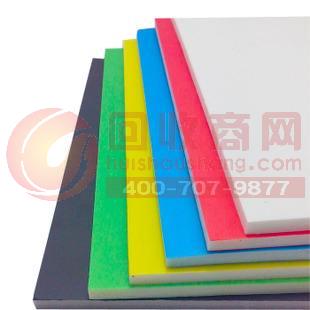
What is low foam injection molding?
The low foamed plastic is a plastic having a foaming rate of 5 times or less and a density of 0.2 to 1.0 g/cm 3 , and is sometimes referred to as synthetic wood. A process in which a certain amount of a foaming agent is added to some plastics to obtain a low-foaming, non-foamed plastic part by injection molding is called a low-foam injection molding.
How many low foam injection molding methods are there?
There are two main types of low-foam injection molding methods, the so-called low pressure method and high pressure method.
What is the low pressure method for low foam injection molding?
The low pressure method, also known as the incomplete injection method, has a mold cavity pressure of usually about 2 to 7 MPa. The low-pressure method is characterized in that a plastic melt (75% to 85% of the volume of the cavity) having a volume smaller than the volume of the cavity is injected into the cavity, and the melt is expanded by the action of the foaming agent, and the cavity is molded into a plastic. Pieces. A valve-type self-locking nozzle and a liquid-controlled self-locking nozzle can be installed on a common injection machine to perform low-pressure molding injection, and a large-scale low-pressure foam injection machine specially produced.
What is the high pressure method for low foam injection molding?
The high pressure method is also called the complete injection method, and the mold pressure is higher than the low pressure method, which is about 7 to 15 MPa. The high pressure method is characterized in that the melt containing the blowing agent is filled with a closed cavity having a volume smaller than the volume of the plastic part by a higher injection pressure, and the cavity volume is expanded to the shape required by the plastic part by the auxiliary mold opening action. size.
What is the low foam injection molding temperature?
Temperatures include material temperature and mold temperature. The temperature of the injected material has an important influence on the formation and diffusion of bubbles in the cavity. Increasing the temperature can increase the gas diffusion coefficient during foam molding, which is beneficial to form more and more uniform bubbles inside the plastic part. However, if the temperature is too high, the injection phenomenon will occur during the filling process, which will affect the development of the plastic parts. The quality of the foam is formed, therefore, the temperature of the barrel at the time of injection is strictly controlled in production.
The temperature of the mold has an influence on the distribution and size of the bubbles in the plastic part, and also affects the surface quality of the plastic part. When the melt is isothermally filled into the cavity, the number of bubbles in the plastic part is larger and the distribution is more uniform. When the cavity is filled under non-isothermal conditions, the number of bubbles generated at low temperature is much less than that generated at high temperature. Therefore, In low-foam injection molding, in addition to selecting the appropriate mold temperature, try to use isothermal filling.
Different low foaming plastics have different requirements on mold temperature. The surface quality of low foam injection molded plastics has little relationship with mold temperature, while the surface quality of low foam injection molded plastic parts such as polystyrene and aBS is molded. The temperature has a greater impact. Under normal circumstances, polyolefin low foam injection molding temperature can be selected within 30 ~ 40 ° C, polystyrene and aBS low foam injection molding mold temperature can be selected within 30 ~ 65 ° C.
What is the low foam injection molding pressure?
Injection pressure has an effect on the formation, size and distribution of bubbles. When the injection pressure is not large, the plastic melt may foam when flowing in the pouring system, and the diameter of the bubble in the molded plastic part after filling is large and uneven; when the injection pressure is large, the melt is in the pouring system. It is unlikely to foam inside, so the shape of the bubble in the molded part after filling is small and the distribution is relatively uniform; if the injection pressure is too large, it may greatly affect the diffusion of the foaming gas and eventually affect the expansion rate. The injection speed is complementary to the injection pressure. In low foam injection molding, it is generally required to use a larger injection speed to prevent the plastic melt from foaming in advance in the casting system.
In low-pressure foam injection molding, the melt also needs a certain pressure-holding effect after filling the cavity, and the melt will continue to bubble under the pressure-holding action.
What is the injection time and cooling set time for low foam injection molding?
The concept of injection time in low-foam injection molding is the same as the injection time concept in ordinary injection molding, generally 10s to 20s, and the smallest plastic parts can be as short as ≤3s.
The low-foam injection molding has a longer cooling setting time because the outer structure of the plastic part is tight, the inside is loose cells, and the thermal conductivity is poor. If the cooling setting time is insufficient and the mold is released too early, although the surface is solidified, the foaming agent may continue to act internally, which will cause the plastic parts to be deformed and the size is out of tolerance, so the correct selection and control of the cooling is performed. The setting time is one of the important factors to ensure the quality of low foam injection molding plastic parts.
Arrow Board,Road Work Arrow Board,Led Arrow Board Truck Mount,Led Traffic Arrow Board
Shenzhen Wide Way Optoelectronics Co., Ltd. , https://www.wdmtrafficlight.com
